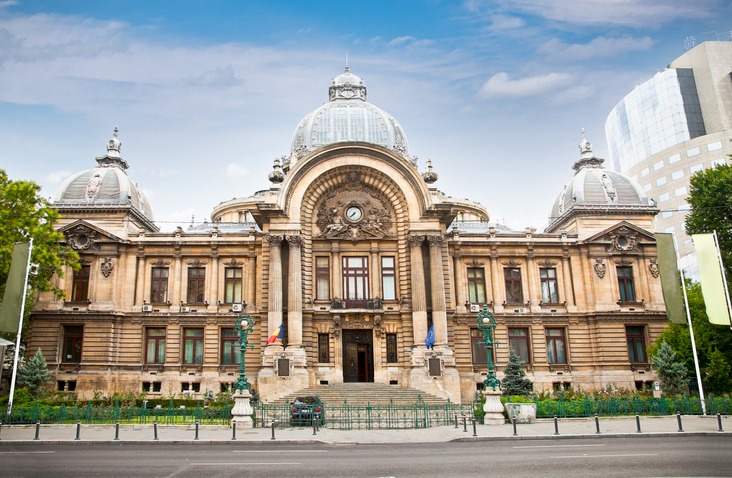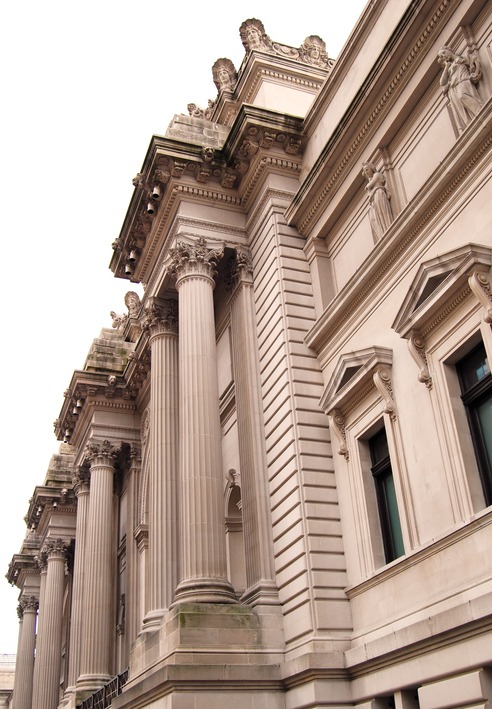If there is something grand that history has given the modern world, it would be the great minds that inspired several (and mostly) magnificent architectural movements. Architectural movements had undoubtedly left their marks on the face of every corner of the world. Standing at their full grandeur, they continuously bring fascination and amusement to those who laid eyes on them. There are all kind of architecture styles ranging from modern use of aluminum stair lifts to heavily wood themed old world style.
With the spark of the Renaissance from the 14th to the 16th and 17th centuries, it is as if the world had seen all. Except for that centuries later, the said architectural movements further inspired a spawn of innovative styles in architecture. Beaux-Arts Architecture is a great example to explore. You may have seen one or two of these beaux-arts buildings in New York City without even knowing it!
An Academic Architectural Style

The École des Beaux-Arts in Paris is one of the prominent art schools in France, and it is where 18th and 19th-century artists should find themselves if they want to master the Beaux-Arts Architecture. The school was instrumental in spreading the architectural style, which quickly thrived in France and other nations, especially during the 19th century.
Thanks to these four great architectural geniuses, Joseph-Louis Duc, Félix Duban, Henri Labrouste, and Léon Vaudoyer, the strict adherence to the old architectural style of formal classicism was challenged. It paved the way for artists to develop novelty ideas that take on a fresh face in architecture but still maintain traces of the past. With that in mind, the French would create its authentic style, “imprinting upon their architecture a truly national character.”
Beaux-Arts Architecture drew upon the French neoclassicism principles and incorporated traces of Renaissance and Baroque elements. Soon after its introduction, the architectural style claimed its accolade, becoming an integral art style in France until the late 19th century. It became a revolution against the strict formality of the old by introducing novelty models in architecture.
An Imposing Work of Art
Although Beaux-Arts Architecture tends to borrow tons of inspiration from several architecture styles, it sure has borrowed the best features of those styles. Columns and symmetry are key features of Beaux-Arts architecture, and you can easily spot them in building facades. These features were inspired mainly by classical architecture.
Horizontal and vertical symmetry, as we know, tend to evoke a sense of balance. It is extremely helpful and essential when designing buildings that would have an integral role in the community. Museums, community libraries, state halls, courthouses, architectural monuments, and others must have an imposing look on them as they reflect the people of a particular country.
Nevertheless, such features alone would have made the style as boring as its predecessors. Thanks to the touch of ornate and eclectic elements, such dullness of symmetry and formality can be obliterated while adding character and volume to the architecture simultaneously. Additionally, sculptural decorations prove to be another integral feature of this style, invoking an imposing charm, purpose, and character to the building.
A Bold Statement
Beaux-Arts Architecture was always meant to communicate a bold statement, and what more effective way to deliver that statement than through magnificent architecture? In the U.S., for example, several historical landmarks are heavily influenced by Beaux-Arts Architecture. The height of this style was in the period from 1880 to 1920.
The style was not only a thing of beauty, but it was a perfect statement imposing a sense of wealth and civic pride. The opulent and decorative details were not only present to drown people with visual goodness, but they also serve as an indicator of what the building is meant to be and for what purpose. Sculptural decorations, which the style heavily depends on, are powerful symbols that often graces the façade of a Beaux-Arts Architecture.
The architectural style, just like the rest, is distinguishable for its imposing features. It is worth noting that these features came from several different architectural styles, so it is pretty easy to make mistakes when naming one. But in a nutshell, the distinguishing features of Beaux-Arts Architecture are as follows:
- It has a flat roof.
- It features a rusticated and raised first story.
- It involves a hierarchy of spaces, from “noble spaces”—grand entrances and staircases—to practical ones.
- It has arched windows and doors are always present.
- Presents a touch of classical architectural styles and eclectic decorations.
- It necessarily has horizontal and vertical symmetrical details, as seen in the columns.
- It incorporates other forms of visual arts to assert the character of the building. It includes sculpture (bas-relief panels, figural sculptures, sculptural groups), mosaics, murals, and other relative theme and element art forms.
- It incorporates a subtle form of polychromy, usually of monochromatic shade.
- It is grand in terms of size and scale.
Beaux-Arts Architecture in the Modern World
Beaux-Arts Architecture managed to spread to every continent, and the grandiosity of the style itself can explain it. The style has been most prominent in Europe, its birthplace, but it is also prevalent in North and South America, Asia, Oceania, and Africa. These buildings were mostly national landmarks like museums, libraries, courthouses, and capitol buildings. Also, it is worth mentioning that mansions and private properties featuring this architectural style also exist mainly for a show of wealth and status.
In the modern world, the style opened up several possibilities in architectural design. While its predecessors were bound by limitations such as materials and quality of resources used, Beaux-Arts Architecture embraced technology and industry – they even became an essential part of it. The Industrial Revolution, for example, became a major trend of this style.
When the Industrial Revolution began to unravel toe to toe with the development of the architectural style, Beaux-Arts architects saw it as an opportunity. They pioneered using materials not commonly used in the classical architectural style. For example, architects used cast iron and paired it with large glass areas to create light-filled spaces. Enormous Beaux-Arts Architecture also graced train stations to nod to the invention of powerful machines and the discovery of new power sources.
Conclusion
Architecture has always been a reminder of humanity’s ability to imagine and will things to reality. Beaux-Arts architecture statement that defiance of conformity and formality is not always bad. These architectures embody an artist’s passion – they are not merely places where people can convene for matters of importance. They also imbue identity with their lavish decorations and symbolic embellishments.

